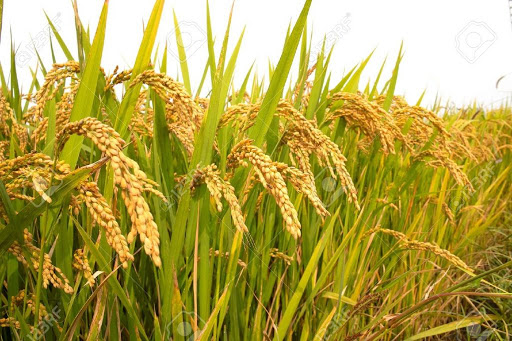KATHMANDU: Nepal is estimated to have produced 5,486,472 tons of paddy this year, which is 6.94 percent more than the yield of last year.
According to the Ministry of Agriculture and Livestock Development (MoALD), the increase in production was due to the growing use of improved paddy seeds, adequate rainfall during monsoon and increased mechanization in paddy plantation. Despite the ministry’s claim, the farmers sustained the shortfall in chemical fertilizers this year too.
Although the production this year has increased, the quantity is still less by around 200,000 tons compared to that in the fiscal year 2020/21, when the country had recorded the highest produce of 5,621,000 tons. Last year, the harvest was largely affected by untimely and incessant rainfall and stood at 5,151,000 tons.
Due to improved measures used for the paddy production, the productivity has also grown to 3.8 tons per hectare this year. Earlier, the productivity of rice was 3.5 tons per hectare.
According to the MoALD, the paddy plantation area has been declining every year due to the shortage of manpower, massive land plotting and rapid urbanization. This year, paddy plantation was done in 1,447,789 hectares of land, which was two percent less than that of last year.
Despite an increase in the production volume and productivity, Nepal is facing an increasing import of the cereal every year. As of mid-December this year, the country spent Rs 12.65 billion to import rice. The MoALD has estimated that the yield this year will fall short by 480,000 tons to meet the domestic demand.
Researches show that Nepal’s agricultural sector is challenged by declining per capita arable land, limited access and use of new technologies, and inadequate input supply chains that often limit timely availability of critical inputs like fertilizer, irrigation, and machinery. The per capita consumption of rice in Nepal is 138 kg, and it contributes 13 percent to the agriculture GDP and 52 percent to the total cereal consumption in the country. Rice contributes four percent to the country’s GDP.
Till date, the Nepal Agriculture Research Council (NARC) has developed 82 rice varieties and an additional 48 hybrid rice varieties have been registered with the government agencies.
Province-wise, the Madhesh Province produced 1,388,000 tons of paddy this year, the largest of all. Province 1 produced 1,336,000 tons and Lumbini province grew 1,151,000 tons of paddy during the main harvesting season.

